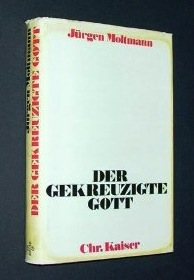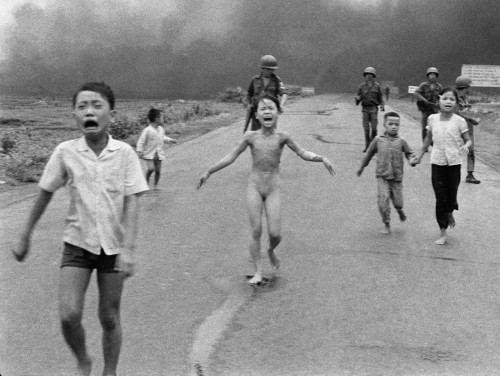
Two articles have come across my radar as of late: one from Christianity Today, “Culture Making Amid Cancer: the Choices that Suffering Makes Possible,” and the other through Yahoo News, “AP Napalm Girl Photo from Vietnam War Turns 40”. The two articles cover two vastly different topics: Cancer and the Vietnam War. However, those two vastly different topics have a common thread: suffering and hope in the midst of it. A woman diagnosed with cancer who loses just about everything and a young victim of the Vietnam War desperately trying to escape her past, find hope and even purpose in the same place: the bible.
The Breast Cancer survivor and author of the article, Sarah Thebarge, writes,
“As I’ve watched my messy-yet-beautiful life unfold in Portland, I’ve learned to see God’s presence in it—not only in what he gave me, but in what he allowed to be taken away. As Kim and I and many saints before us have discovered, sometimes it takes a catastrophe to strip away our assumptions and our sense of security. Sometimes having nothing left to lose gives us an incredible freedom to take a risk we were too afraid or too comfortable to take before.”
“The Christ we worship is not only with those who are successfully ruling over cities; he’s also with the ostracized lepers and the brokenhearted cancer patients who are weeping just outside the gate. And in our pain and isolation, he’s calling us to surrender everything we wanted, to release our grip on everything we thought we needed, so that he can give us himself instead.
“I don’t know that I’ll ever believe my cancer was a gift. But as I’ve watched God exchange my temporary losses for his eternal joy—and as I see people like Kim Newlen take courageous steps of creativity for his name’s sake—I’ve seen beauty emerge from ashes. I’ve seen strength unfold from weakness. I’ve seen his painful yet patient mercy working in me just beneath the scars, just outside the gate.”
The article about the ‘napalm girl,’ Kim Phuc, the author, Margie Mason describes Phuc’s life after the war and the photo,
“For a while, life did go somewhat back to normal. The photo was famous, but Phuc largely remained unknown except to those living in her tiny village near the Cambodian border. Ut and a few other journalists sometimes visited her, but that stopped after northern communist forces seized control of South Vietnam on April 30, 1975, ending the war.
Life under the new regime became tough. Medical treatment and painkillers were expensive and hard to find for the teenager, who still suffered extreme headaches and pain. She worked hard and was accepted into medical school to pursue her dream of becoming a doctor. But all that ended once the new communist leaders realized the propaganda value of the ‘napalm girl’ in the photo.
She was forced to quit college and return to her home province, where she was trotted out to meet foreign journalists. The visits were monitored and controlled, her words scripted. She smiled and played her role, but the rage inside began to build and consume her.
“I wanted to escape that picture,” she said. “I got burned by napalm, and I became a victim of war … but growing up then, I became another kind of victim.”
She turned to Cao Dai, her Vietnamese religion, for answers. But they didn’t come. “My heart was exactly like a black coffee cup,” she said. “I wished I died in that attack with my cousin, with my south Vietnamese soldiers. I wish I died at that time so I won’t suffer like that anymore … it was so hard for me to carry all that burden with that hatred, with that anger and bitterness.”
One day, while visiting a library, Phuc found a Bible. For the first time, she started believing her life had a plan…
After four decades, Phuc, now a mother of two sons, can finally look at the picture of herself running naked and understand why it remains so powerful. It had saved her, tested her and ultimately freed her.
“‘Most of the people, they know my picture but there’s very few that know about my life,” she said. “I’m so thankful that … I can accept the picture as a powerful gift. ..’”
Sarah’s story directly states the power of the gospel message for those who are suffering: Jesus is present with those who are suffering, wounded, lost, and forsaken. In the gospel story there is hope and light even when everything is dark. Kim’s story requires a more intuitive and intellectual jump to make that same deduction, but it’s still there: in the midst of physical, emotional, and mental suffering—suffering from a sickened heart, desperate to find some cure for the pain—Kim found the bible, the message about Jesus, and from there she experienced hope, love, and freedom (and, subsequently, purpose) that otherwise would not have been found apart from that message.
 That’s the thing about suffering: you are made aware that there is no remedy or cure for it in within yourself. And, if you have only yourself to deal with it and that self is a poor physician, you are utterly lost in it. Suffering has a unique way of drawing us to the Suffering God who suffered for us on the cross, was raised from the dead and has declared that the suffering of this life will not last forever, that it is not the final word, and that He has conquered it. Suffering draws us to this God who is love, who is not far off when we are at our worst, ugliest, decrepit, sick, infirm, maimed…who has come close and breathes into our lungs, resuscitating us from the dead, giving us real and true life, new hearts, allowing us to love him and to love others (purpose). He uses those things intended for evil for good.
That’s the thing about suffering: you are made aware that there is no remedy or cure for it in within yourself. And, if you have only yourself to deal with it and that self is a poor physician, you are utterly lost in it. Suffering has a unique way of drawing us to the Suffering God who suffered for us on the cross, was raised from the dead and has declared that the suffering of this life will not last forever, that it is not the final word, and that He has conquered it. Suffering draws us to this God who is love, who is not far off when we are at our worst, ugliest, decrepit, sick, infirm, maimed…who has come close and breathes into our lungs, resuscitating us from the dead, giving us real and true life, new hearts, allowing us to love him and to love others (purpose). He uses those things intended for evil for good.
Sarah and Kim are two very different women with two very different stories, yet their message is the same. Indeed, it is the same one that Juergen Moltmann articulates so beautifully in The Crucified God:
“God allows himself to be humiliated and crucified in the Son, in order to free the oppressors and the oppressed from oppression and to open up to them the situation of free, sympathetic humanity.”

COMMENTS
2 responses to “Breast Cancer, Napalm, and Freedom: The Fruit of Suffering”
Leave a Reply















Thank you Dr. Sebi for curing my cancel may God bless you. Dr. Sebi cure All Diseases” HIV, AIDS, Diabetes, Cancer, Stroke, STDs. contact Dr. Sebi Office on Email: info.drsebiscellfood@gmail.com on How to Live long Healthy Life.